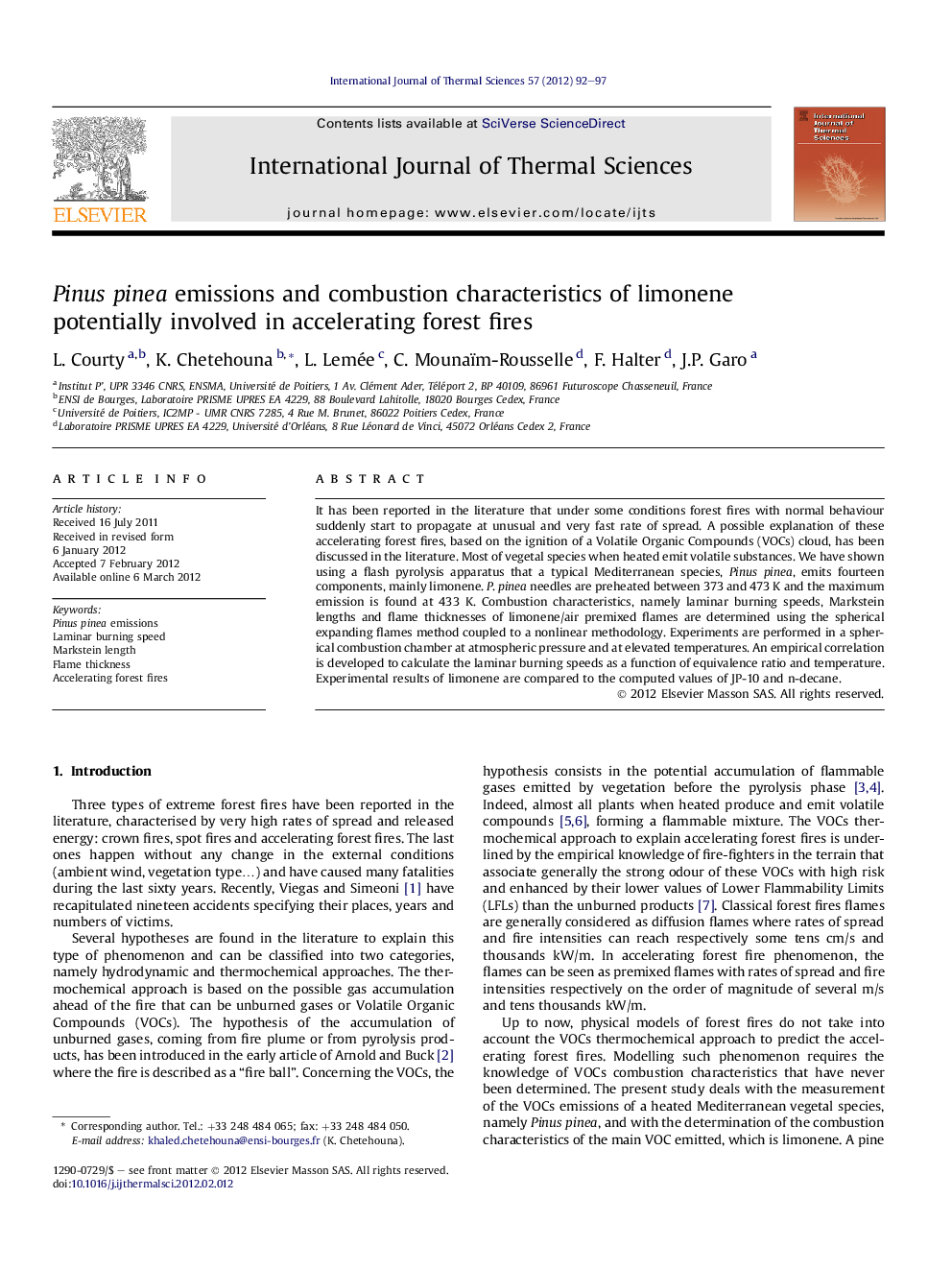| Article ID | Journal | Published Year | Pages | File Type |
|---|---|---|---|---|
| 668685 | International Journal of Thermal Sciences | 2012 | 6 Pages |
It has been reported in the literature that under some conditions forest fires with normal behaviour suddenly start to propagate at unusual and very fast rate of spread. A possible explanation of these accelerating forest fires, based on the ignition of a Volatile Organic Compounds (VOCs) cloud, has been discussed in the literature. Most of vegetal species when heated emit volatile substances. We have shown using a flash pyrolysis apparatus that a typical Mediterranean species, Pinus pinea, emits fourteen components, mainly limonene. P. pinea needles are preheated between 373 and 473 K and the maximum emission is found at 433 K. Combustion characteristics, namely laminar burning speeds, Markstein lengths and flame thicknesses of limonene/air premixed flames are determined using the spherical expanding flames method coupled to a nonlinear methodology. Experiments are performed in a spherical combustion chamber at atmospheric pressure and at elevated temperatures. An empirical correlation is developed to calculate the laminar burning speeds as a function of equivalence ratio and temperature. Experimental results of limonene are compared to the computed values of JP-10 and n-decane.
► VOCs emissions of Pinus pinea are measured at elevated temperatures. ► Combustion characteristics of limonene/air mixtures are determined for different preheat temperatures. ► Numerical simulations of laminar burning speeds of JP-10 and n-decane are performed. ► The combustion characteristics will be used to investigate the thermochemical approach for accelerating forest fires.
